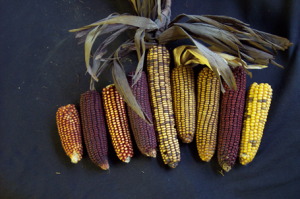What’s New
For the period Apr 17, 2024, through Apr 23, 2024, there are 3 newly-issued inbred patents and 3 newly-issued hybrid patents. There is also 1 newly-published PVP certificate.
There are 2 newly expired inbred patents and 0 newly expired hybrid patents.
The number of US-issued corn inbred and hybrid patents per decade has risen dramatically from:
Decade Inbred Patents Hybrid Patents Inbred Patents Hybrid Patents
Issued Issued Expired Expired
- 1986-1995 76 8 13 0
- 1996-2005 588 167 29 8
- 2006-2015 1550 1381 141 25
- 2016-current 1241 1464 605 348
Dec 27, 2022, By popular demand, two features have been added to the search options for EXPIRED INBRED PATENTS, EXPIRED INBRED PVPs, and INBRED GENETIC SEARCHES. Specifically, the number of patented progeny, AND the number of patented hybrids derived from inbreds are now listed along side the inbreds in the results page as well as the details page. This feature may provide information on the relative value of individual inbred lines within a patent assignee’s breeding program.
Dec 14, 2022, When searching in the “Inbred Genetic Backgrounds or Offspring” search, the report now indicates whether the patent or PVP certificates of an inbred or its resulting offspring inbreds have expired. The result is either “YES” (expired) or “NO” (not expired).
Dec 14, 2022, “Inbred Patents Expired or Soon to Expire” and “Inbred PVP Certificates Expired or Soon to Expire” now also allow for the search of individual inbreds to see if they are expired. Enter the name of the inbred in the “Inbred” field. If the inbred patent or PVP is expired, a result will be returned to the summary and details pages. If the inbred patent or PVP is not expired, no results will be returned.
Aug 3, 2022, During the Aug 2, 2022, database update, some difficulties were encountered with the format of certain date values, causing problems with certain data searches as well as search results. Any information generated from searches from Aug 2 – Aug 3, 2022, was correct. However, some information normally expected from the search may have been missing. The issues underlying this problem were identified and resolved, and the database as well as search functions used after Aug 3, 2022, are once again working properly. CPIS apologizes for any inconvenience created during the Aug 2 – Aug 3 time period, and thanks you for your patience.
July 24, 2019, “Other ID 1” field has been added to the Results pages of “New Inbreds Patented in the Last 28 Days” and “New Inbreds PVP-Certified in the Last 6 Months”. This field is listed adjacent to the “Inbred Variety” field.
Feb 6, 2019, “Other ID 1” field has been added to the Results pages of “Inbred Patents Expired or Soon to Expire”, “Inbred PVP Certificates Expired or Soon to Expire”, and “Inbred Pedigree Genetic Background Search”. This field is listed adjacent to the “Inbred Variety” field.
Starting Nov 27, 2018, the details pages pertaining to various inbred information searches now lists Grand Parents (2nd previous breeding cycle) of each inbred listed on the Report page.
On Mar 27, 2018, about 60 older, publicly-developed “founder” inbred lines were added to the database for more comprehensive ancestry search, even though these founder lines were never patented nor PVP-protected. This list of founder lines includes inbreds such as A632, B14, B73, C103, MO17, OH43, etc. The pedigrees of these founder lines were graciously provided with permission to publish by MBS Genetics, LLC, Ames, IA, USA.
On Dec 13, 2017, a new page was added to the web site, titled “Obtaining Seed”. This page provides general information regarding how to obtain seed samples of patented and/or PVP-certified maize germplasm. This page is not intended as an exhaustive list of ways in which to obtain seed. However, it does provide some of the more common options.
There are currently over 700 patented corn inbreds for which PVP certificates have not been issued, and over 600 PVP-certified corn inbreds for which patents have not been issued.
CPIS has, through the month of September, 2016, updated our entire database in order to account for any patented corn germplasm for which patent maintenance fees were not paid, and which therefore have expired due to maintenance fee neglect according to the US Patent and Trademark Office. As of Oct 4, 2016, this database update reflects 25 corn inbred varieties and 16 corn hybrid varieties for which patents had expired prematurely due to non-payment of patent maintenance fees. These database updates are now henceforth reflected in any patent expiration date queries made. Maintenance fee non-payment activities will henceforth be monitored, and will reflect in the ongoing weekly database updates. To see if a particular patent has expired due to non-payment of maintenance fees, please check the Details page for an expired variety. If an expired variety has a date listed for “Abandoned_Maintenance_Fee”, the patent was expired on the date listed.
